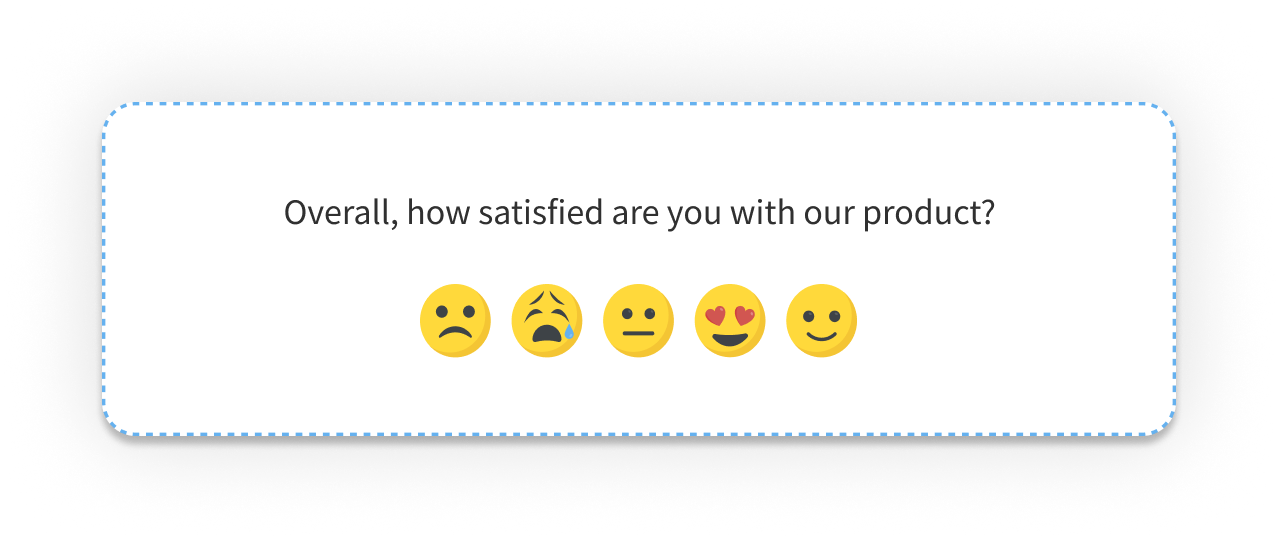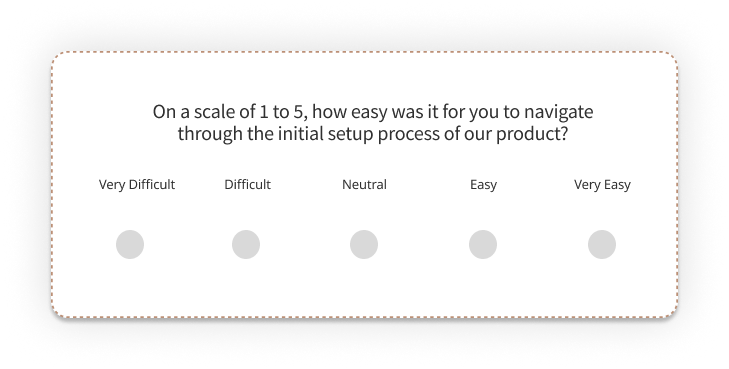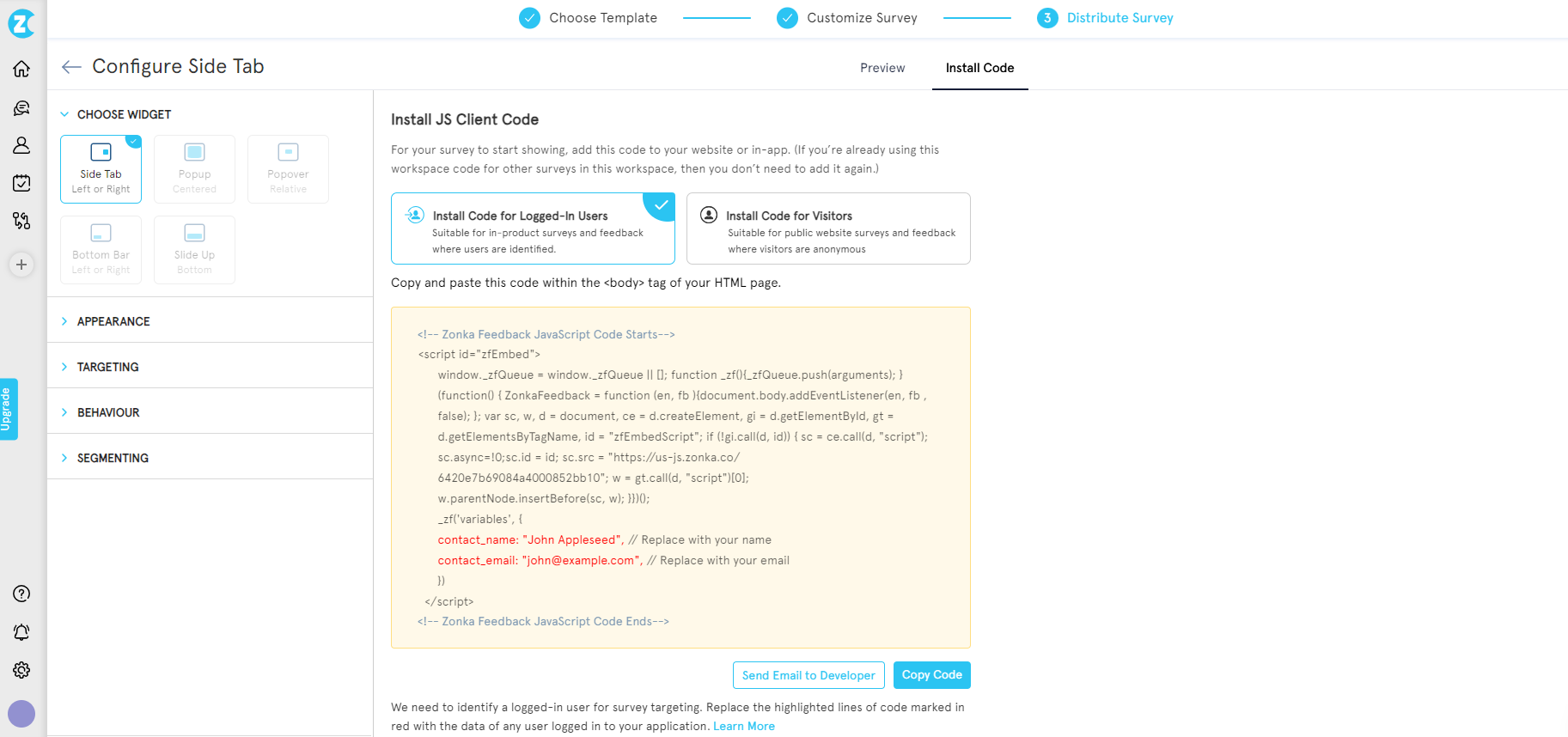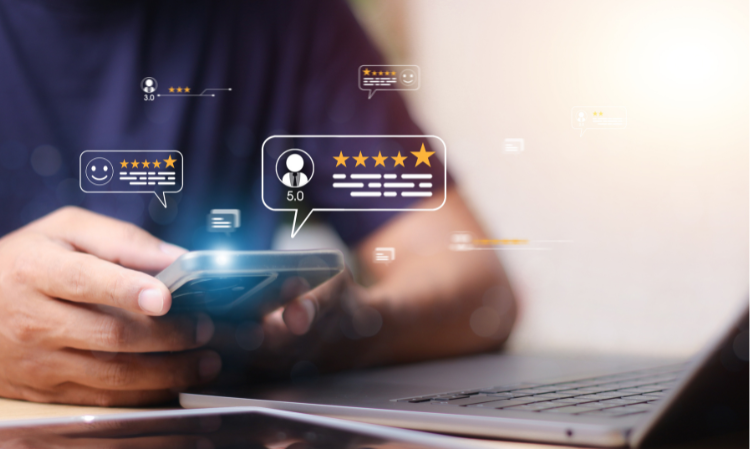Imagine this: A global financial firm rolls out a new software solution designed to streamline operations across multiple regions. The initial excitement is palpable, but within weeks, frustration sets in. The onboarding was clunky, support was inconsistent, and soon, what was supposed to be a game-changer becomes just another tool gathering digital dust. This is the reality of poor product experience, and it's a scenario that no company can afford to ignore.
Product experience (PX) is more than just a buzzword—it's the heartbeat of your software's success. From the first interaction to daily use, every touchpoint shapes how your customers perceive your product. A seamless PX can be the difference between a thriving relationship with your users and one that falters.
Take the example of Slack. This communication platform didn't just create a software; it built a community. By prioritizing simplicity, offering extensive integrations, and fostering a culture of collaboration, Slack transformed the way teams work, driving engagement and loyalty.
In this article, we will guide you through mastering product experience from the moment of onboarding to the critical stage of customer advocacy. We'll explore the lifecycle of PX, share insights from successful companies, and discuss best practices to ensure your product not only meets but exceeds user expectations. Let's get started!
TL;DR
- Product experience (PX) refers to how users interact with and perceive your software, encompassing every touchpoint from onboarding to daily use, ultimately driving business success.
- The core components of PX include usability, onboarding, adoption, support, performance, customization, and security that create a seamless and empowering user experience.
- The product experience lifecycle includes acquisition, onboarding, adoption, retention, expansion, and advocacy and each stage is crucial in delivering a value-driven journey to users.
- Cisco, Adobe, and Zoom have successfully optimized their SaaS product experiences by personalizing onboarding, customizing features, and enhancing user engagement.
- Some of the best practices to improve product experience include tailoring onboarding, promoting cross-departmental collaboration, and leveraging AI and automation.
- Key trends in PX include hyper-personalization through AI, enhanced UX with no-code/low-code platforms, vertical SaaS solutions, and increased focus on customer success and automation.
- Zonka Feedback is a powerful product survey tool that enhances your product experience by capturing and analyzing user feedback through targeted surveys. With AI-powered text analysis, real-time reports, and workflow automation, you can make data-driven decisions, streamline product processes, and close the feedback loop effectively. Sign up for a free trial or schedule a demo to optimize your product experience journey.
Measure Product Feedback & User Insights 💻
Enhance product experience with Zonka Feedback. Understand what users need and learn ways to delight your users.

What is Product Experience?
When you're the CEO of a sprawling enterprise, it is no secret that your digital landscape is a complex ecosystem of interconnected systems, each promising efficiency. Yet, if something feels off and your teams are grappling with tools, not thriving with them, then it's time to take a closer look.
This isn't just about software; it's about the experience your people have with it. Every click, every loading screen, every error message shapes how they perceive your organization's digital maturity. It's the difference between a tool and a partner, between hindrance and catalyst.
This is what you call product experience. It's not just about the software; it's about how that software makes your people feel, how it empowers them, and ultimately, how it drives your business forward.
Product experience (PX) is the invisible thread that weaves together every interaction, from the initial spark of interest to the moment your product becomes an indispensable part of your customers' lives. It's about more than just usability; it's about creating an experience that resonates, inspires, and delivers tangible value.

Why is Product Experience Important?
In today's competitive landscape, a superior product experience is a necessity for business survival and growth. Let us look at some reasons why you must focus on complete product experience for your organization.
- Enhanced Customer Retention: In complex, multi-departmental organizations, a seamless product experience is essential for reducing churn and increasing customer lifetime value. For instance, a financial institution with a user-friendly mobile app that allows customers to easily manage their accounts is more likely to retain customers compared to one with a clunky interface.
- Improved Efficiency: A well-designed product can streamline workflows, reduce errors, and boost productivity across the enterprise. For instance, a financial institution with a user-friendly mobile app that allows customers to easily manage their accounts is more likely to retain customers compared to one with a clunky interface.
- Accelerated Digital Transformation: A positive product experience can be a catalyst for adopting new technologies and driving innovation. For example, a healthcare provider with a patient portal that is easy to navigate and provides value will see increased patient engagement and faster adoption of telehealth services.
- Risk Mitigation: By addressing potential pain points proactively, enterprises can avoid costly disruptions and reputational damage. A retail giant that invests in a robust product experience platform can identify and address potential issues before they escalate into public relations nightmares.
- Competitive Advantage: A superior product experience can differentiate a company from competitors and create a strong market position. Consider a tech company like Apple that has built a loyal customer base and commands its premium pricing by consistently delivering innovative and user-friendly products.

Understanding Product Experience
The product experience lifecycle is the journey your customers take from initial discovery to becoming a loyal advocate. It encompasses every touchpoint, from the ease of acquisition and onboarding to the ongoing value delivered through product adoption and utilization.
By meticulously mapping this journey, you can identify areas for improvement, optimize customer interactions, and promote long-term relationships.
Core Components of Product Experience
Before we delve into the product experience lifecycle, let us quickly understand the core components that make a product experience. At its heart, product experience revolves around usability, onboarding, adoption, and support. Think of these as the building blocks. These are strengthened by performance, customization, and security. Let's look at these:
- Usability: How easy is it for users to navigate and interact with the product? Does the interface make sense, and can users accomplish their goals efficiently? An intuitive interface can be the difference between a tool that empowers users and one that frustrates them. Deploy usability testing tools on regular basis to see how users work with the interface.
- Onboarding: A seamless onboarding experience sets the tone for the entire product journey. It’s not just about getting users started; it’s about integrating the software into their daily routines. How quickly can users get up to speed and start deriving value? Imagine onboarding a multinational retailer with a complex, tiered user base. By segmenting the onboarding process and offering personalized tutorials, they can achieve a 50% faster time-to-value across all regions.
- Adoption: How widely is the product used within an organization? Are users engaged and finding value in the product? Consider a global logistics company that noticed a dip in engagement. By introducing targeted in-app guides highlighting underutilized features, they boosted feature adoption by 25% within three months.
- Support: Customer support is often the unsung hero of PX. A proactive support team doesn’t just resolve issues; it enhances the overall experience. For instance, a SaaS provider for financial institutions implemented a 24/7 support model that not only reduced downtime but also increased client retention by 15%.
- Performance: A product that stutters is like a car that sputters. Performance is the engine that drives user satisfaction. Imagine a critical financial application freezing at the peak of a trading day. The consequences are catastrophic. Reliability, speed, and responsiveness are paramount.
- Customization: Every enterprise is unique. A one-size-fits-all approach doesn’t cut it. Customization is about empowering users to mold the product to their specific needs. Think of a global enterprise with offices across continents. By offering granular customization options, they can ensure the product aligns with regional preferences and workflows, boosting adoption and satisfaction.
- Security: In today's data-driven world, security is non-negotiable. A data breach can be a reputational disaster. Consider a healthcare provider mishandling patient records. The damage to trust and brand reputation can be irreparable.

By keeping the core components in mind, you can build great product experience that drives user satisfaction and business success.
Now, let's map out the journey your customers take.
SaaS Product Experience Lifecycle
Imagine your SaaS product as a passenger on a high-speed train. The journey starts with boarding (acquisition), followed by settling in (onboarding), enjoying the ride (adoption), and ultimately, recommending the journey to others (advocacy). Each stage is crucial, and a disruption at any point can derail the entire experience. But there's more to it.
Let's understand the SaaS product experience lifecycle in detail and explore how each phase contributes to a seamless, value-driven journey for clients.
a. Acquisition and Onboarding
This phase encompasses the initial interactions between your enterprise and potential customers. It's about creating a positive first impression and ensuring a smooth transition from prospect to customer.
- Streamlining Procurement and Integration: Simplifying the purchasing process is essential for a smooth start. This includes offering clear pricing models, flexible contract terms, and efficient integration options. For instance, Salesforce streamlined its procurement process by introducing a clear pricing calculator and pre-built integrations with popular CRM systems, leading to a 40% reduction in sales cycle time.
- Crafting a Seamless Onboarding Process: Tailoring the onboarding experience to specific departments is crucial for driving adoption. Consider offering dedicated onboarding specialists for different industry verticals. This personalized approach can significantly improve user satisfaction and time-to-value.
- Leveraging Free Trials and Pilots: Offering a risk-free trial or pilot program can accelerate the decision-making process for enterprises. By providing tangible proof of value, you can increase the likelihood of conversion. For example, a marketing automation platform that offered a 30-day free trial with full feature access experienced a 25% increase in conversion rates.
- Building Strong Relationships with Key Stakeholders: Identifying and cultivating relationships with key decision-makers within the enterprise is vital. This involves understanding their business challenges and demonstrating how your product can solve them. Workday has successfully built strong relationships with C-suite executives by aligning its HR and finance solutions with strategic business objectives, leading to a significant increase in deal size.
- Providing Comprehensive Product Demos and Assessments: Personalized product demonstrations that address specific business needs can significantly impact the buying decision. Offer tailored assessments to highlight potential ROI and benefits. Adobe provides in-depth product demonstrations and ROI assessments tailored to specific industry verticals, leading to an increase in sales-qualified leads.
b. Adoption and Utilization
Once your product has boarded the train, the real journey begins. This phase is about ensuring your passengers (users) are not just along for the ride, but actively enjoying and benefiting from the experience.
- Ensuring Broad and Deep Adoption Across Large Organizations: Driving widespread adoption requires a strategic approach. Consider implementing a tiered adoption strategy, starting with early adopters and gradually expanding to other departments. For instance, Microsoft successfully adopted this approach with its Office 365 suite, resulting in a 75% adoption rate within two years.
- Tailoring Product Features for Different User Groups: Understanding the unique needs of different user groups is essential for maximizing product value. Companies are often a mosaic of diverse teams, each with specific roles, challenges, and goals. A one-size-fits-all approach simply doesn’t work. To truly resonate with each department, you must tailor your product features to meet their distinct needs.
- Providing Comprehensive Training and Support: Continuous learning and support are crucial for driving adoption. Offering a robust training program, including in-person workshops, online tutorials, and dedicated support channels, can significantly impact user satisfaction. Adobe provides extensive training resources and support for its Creative Cloud suite, leading to higher user engagement and retention.
- Leveraging Analytics and User Feedback: Analyzing user behavior and gathering product feedback can help identify areas for improvement and tailor the product experience accordingly. For example, Slack uses in-app analytics to understand user behavior and preferences, enabling them to prioritize feature development and improve the overall user experience.
- Creating a Strong Product Community: Fostering a sense of community among users can drive engagement and knowledge sharing. Online forums, user groups, and social media communities can be powerful tools for building a loyal user base. HubSpot has successfully cultivated a strong user community through its inbound marketing methodology and online resources.
c. Retention and Expansion
Once you've established a strong foundation through acquisition, onboarding, and adoption, it's time to focus on retention and expansion.
- Delivering Exceptional Customer Support: Providing timely and effective support is crucial for retaining customers. A study by Zendesk found that 91% of customers are more likely to make another purchase after a positive customer service interaction.
- Offering Value-Added Services and Upsells: Continuously enhancing the product offering with new features and services can drive customer satisfaction and revenue growth. For example, Dropbox expanded its service to include cloud storage, file sharing, and collaboration tools, increasing its average revenue per user (ARPU).
- Building a Strong Customer Success Team: A dedicated customer success team can proactively identify customer needs and challenges, helping to prevent churn and drive expansion. Salesforce has been a pioneer in this area, with its customer success model contributing significantly to its growth.
- Leveraging Customer Feedback for Product Improvement: Continuously gathering and acting on customer feedback is essential for product development and customer satisfaction. For instance, Spotify uses user feedback to inform its playlist recommendations and new feature development, leading to increased user engagement.
- Creating Loyalty Programs and Incentives: Rewarding customer loyalty can deepen relationships and encourage repeat business. Offering loyalty programs, discounts, or exclusive access to new features can be effective strategies. Amazon's Prime membership program is a prime example of a successful loyalty program.
d. Advocacy and Partnership
The final stage of the product experience lifecycle is about transforming satisfied customers into ardent advocates and building strategic partnerships.
- Fostering a Strong Customer Community: Building a community around your product can foster engagement, knowledge sharing, and advocacy. Platforms like online forums, social media groups, and user conferences can facilitate these interactions. For example, Slack has cultivated a thriving community of users who share best practices and advocate for the platform.
- Recognizing and Rewarding Customer Loyalty: Showcasing customer success stories and offering loyalty programs can strengthen customer relationships. Apple's Apple Genius Bar and loyalty programs are prime examples of how to build a loyal customer base.
- Encouraging Customer Referrals: Incentivizing customers to refer your product to others can be a powerful growth strategy. Dropbox's referral program, which offered additional storage space for successful referrals, is a well-known example.
- Collaborating with Customers on Product Development: Involving customers in the product development process can deepen relationships and foster a sense of ownership. Companies like Salesforce and Adobe actively seek customer feedback and collaborate on new features.
- Becoming a Trusted Advisor: By positioning your company as a trusted advisor, you can deepen customer relationships and drive long-term value. This involves understanding your customers' business challenges and providing strategic guidance.

Case Studies: How Leading Enterprises Enhance Product Experience?
Real-world examples are invaluable for understanding the impact of product experience in the SaaS world. Let's explore how some leading enterprises have successfully leveraged this concept.
1. Cisco
Cisco, a global leader in networking and IT, faced the challenge of ensuring consistent and effective use of their collaboration tools, such as Webex, across a diverse and geographically dispersed workforce. With teams operating in multiple time zones and regions, Cisco needed to create a SaaS product experience that not only supported global collaboration but also addressed the unique needs of different departments, from engineering to sales.
To tackle this challenge, Cisco implemented the following strategies:
- Personalized Onboarding: Cisco developed a tailored onboarding process that included role-specific training sessions and localized support resources. This ensured that each department received the necessary guidance to maximize their use of Webex.
- Department-Specific Feature Customization: Recognizing the diverse communication and collaboration needs across departments, Cisco customized Webex features accordingly. For example:
- Engineering teams received advanced technical integrations.
- Sales teams were provided with enhanced features for customer presentations and virtual meetings.
- AI-Driven Recommendations: Cisco introduced an AI-powered recommendation engine within Webex. This tool suggested relevant features and best practices based on the user's role and past behavior, ensuring users were guided on how to fully leverage the platform’s capabilities.
Results and Business Impact
Cisco’s efforts led to a substantial increase in the adoption and utilization of Webex across the organization. Within the first year, user engagement with advanced features doubled, and cross-functional collaboration improved significantly. The AI-driven recommendations were particularly effective, leading to a 40% increase in the usage of underutilized features, which in turn enhanced productivity and collaboration.
Furthermore, by localizing the onboarding process and providing tailored support, Cisco was able to achieve higher satisfaction rates among its global teams. The personalized experience reduced onboarding time by 30%, enabling teams to become productive more quickly.
Key Lessons to Learn
Here are some lessons that we can learn from the success of Adobe through its product experience strategies:
- Personalized Onboarding: Tailoring the onboarding process to different roles and regions can accelerate adoption and ensure that users quickly find value in the product.
- AI-Driven Recommendations: Leveraging AI to provide contextual feature suggestions can significantly enhance user engagement and ensure that all users, regardless of their role, fully utilize the product’s capabilities.
- Localized Support: Offering support and training that considers the specific needs of different regions and departments can improve user satisfaction and reduce time-to-value.
2. Adobe
Adobe, a pioneer in creative software, faced the challenge of transitioning its extensive user base from traditional software licenses to its cloud-based Creative Cloud suite. The company needed to ensure that users, ranging from graphic designers to video editors, not only adopted the new platform but also engaged deeply with its myriad features.
To address this challenge, Adobe implemented several strategic initiatives:
- Robust Training Resources: Adobe launched a comprehensive training program that catered to users with varying levels of expertise. This included:
- In-Person Workshops: Targeted at enterprise clients to ensure smooth transitions and deep product understanding.
- Online Tutorials and Webinars: Designed to be accessible and on-demand, covering everything from basic functions to advanced techniques.
- Personalized Learning Paths: Understanding that different users have different needs, Adobe introduced personalized learning paths within Creative Cloud. These paths:
- Provided customized recommendations based on the user’s role (e.g., graphic designer, videographer).
- Offered step-by-step guides to mastering relevant tools, ensuring users could quickly gain proficiency in the areas most important to their work.
- Community Engagement: Adobe fostered a strong user community by creating forums, hosting challenges, and providing platforms for users to showcase their work. This not only built a loyal user base but also facilitated peer learning and support.
Results and Business Impact
The tailored learning experiences led to a notable increase in user engagement, with users who participated in these paths being 30% more likely to explore and adopt advanced features. This approach also accelerated skill development across enterprises, reducing the learning curve by 20% and enabling quicker proficiency in critical tools.
Additionally, Adobe’s efforts to foster a strong user community paid off, resulting in a 35% increase in active forum participation and a 40% rise in user-generated content shared through Adobe platforms. This combination of personalized education and community building not only enhanced user satisfaction but also strengthened Adobe’s position as a leader in creative software.
Key Lessons to Learn
Here are some lessons that we can learn from the success of Adobe through its product experience strategies:
- Customized Learning Paths: Offering personalized learning experiences ensures users can quickly adapt to and excel in using new tools, driving deeper engagement.
- Comprehensive Training Programs: Providing a variety of training formats (in-person, online, self-paced) meets the diverse needs of users and accelerates product adoption.
- Community Building: Creating and nurturing a strong user community not only fosters loyalty but also encourages continuous learning and product use.
3. Zoom
Zoom experienced rapid growth, especially during the shift to remote work. However, with this growth came the challenge of ensuring that users across various industries—from education to corporate—could easily adopt and effectively use the platform, regardless of their technical proficiency. While Zoom focused on refining its user experience and expanding its features, many organizations also began considering Zoom alternatives to find solutions better tailored to their unique needs.
To overcome these challenges, Zoom focused on several key strategies:
- Simplified Onboarding: Zoom designed an intuitive, step-by-step onboarding process that required minimal technical expertise:
- Quick Start Guides: Provided users with essential instructions to get up and running in minutes.
- Interactive Tutorials: Walked new users through the most common use cases, such as scheduling meetings and using breakout rooms.
- Industry-Specific Features: Recognizing that different sectors have unique needs, Zoom developed features tailored to specific industries:
- Education: Zoom introduced features like virtual classrooms and attendance tracking to support educators and students.
- Corporate: For corporate users, Zoom integrated with existing enterprise tools (e.g., Slack, Microsoft Teams) and enhanced security features to meet business compliance standards.
- Proactive Support and Resources: Zoom invested heavily in providing accessible support and resources to its global user base:
- 24/7 Global Support: Ensured that users could get help whenever they needed it, regardless of their time zone.
- Resource Library: Included a vast array of FAQs, video tutorials, and best practices tailored to different user groups.
Results and Business Impact
Within a year, Zoom saw a 50% increase in enterprise adoption, with widespread use across education, healthcare, and corporate sectors. The platform maintained high user satisfaction scores, thanks to its user-friendly design, which also led to a 30% reduction in support requests during the onboarding phase.
Furthermore, the introduction of tailored features for different industries, such as virtual classrooms for education and enhanced security for corporate users, resulted in measurable improvements in user experience.
Key Lessons to Learn
Here are some lessons that we can learn from the success of Zoom through its product experience strategies:
- Intuitive Onboarding: A straightforward onboarding process is crucial for rapid adoption, particularly when scaling across diverse user groups.
- Industry-Specific Customization: Tailoring product features to meet the unique needs of different industries drives deeper engagement and satisfaction.
- Proactive Global Support: Investing in around-the-clock support and comprehensive resources ensures that users feel supported and confident, no matter where they are.
Best Practices for Enhancing Product Experience
Now that we’ve explored how leading enterprises like Cisco, Adobe, and Zoom have successfully optimized their SaaS product experiences, and the key lessons we can learn from their strategies, it’s time to consider how you can apply these insights to your own organization.
Here are some best practices to help you elevate the SaaS product experience within your company:
a. Tailoring the Onboarding Experience
A successful onboarding process is crucial for driving product adoption. By aligning the onboarding experience with specific user needs, organizations can accelerate time-to-value and increase user satisfaction.
- Personalized Onboarding: Create tailored experiences based on user roles, departments, industry verticals, and company size. For example, a financial services firm might offer specialized onboarding tracks for accountants, traders, and compliance officers, considering factors like regulatory requirements and specific job functions.
- Phased Onboarding: Break down the onboarding process into manageable modules or milestones. This provides a clear roadmap for users, preventing information overload and fostering a sense of accomplishment.
- Interactive Elements: Incorporate engaging elements such as interactive tutorials, videos, quizzes, and gamification to enhance knowledge retention and enjoyment. For instance, a progress bar or reward system can motivate users to complete onboarding steps.

b. Promoting Collaboration and Adoption
Encouraging collaboration and adoption is key to maximizing the value of a SaaS product. By creating a supportive environment and providing the necessary tools, organizations can drive widespread product usage.
- Cross-functional Collaboration: Integrate communication and collaboration features within the product to facilitate teamwork and knowledge sharing. For example, embedding project management tools, instant messaging, and file sharing capabilities can enhance collaboration efficiency.
- Change Management Strategies: Develop comprehensive change management plans that include communication, training, and support to overcome resistance and ensure a smooth adoption process. Consider offering incentives or rewards to encourage early adoption.
- User Communities: Foster a sense of community among users through online forums, user groups, and in-person events. Encourage knowledge sharing, peer-to-peer support, and idea exchange.

c. Building Strong Customer Relationships
Building strong customer relationships is essential for long-term success. By focusing on customer satisfaction and loyalty, organizations can drive growth and retention.
- Dedicated Customer Success Teams: Assign dedicated resources to support enterprise customers throughout their lifecycle. These teams should be equipped to address customer needs proactively and prevent churn.
- Knowledge Base and Self-Service: Create a comprehensive knowledge base and self-service resources to empower customers to find solutions independently. This reduces support ticket volume and empowers customers to resolve issues quickly.
- Customer Journey Mapping: Visualize the customer journey to identify pain points, opportunities, and moments of truth. This helps in understanding the customer experience holistically and identifying areas for improvement.
- Net Promoter Score (NPS): Measure customer satisfaction and loyalty through NPS surveys to gain insights into customer sentiment and identify promoters, detractors, and passives.

d. Continuously Updating and Innovating
Staying ahead of the curve is essential for long-term success. This would require you to:
- Frequent Feature Releases: Introduce new features and enhancements regularly to keep the product fresh and competitive.
- Innovate Based on Trends: Incorporate emerging technologies such as AI, machine learning, and automation to enhance the product experience and create new value propositions.
- Product Roadmap Transparency: Share the product roadmap with customers to build trust, generate excitement, and gather feedback on future plans.
Future Trends in Product Experience
As the landscape of SaaS product companies continues to evolve, you must stay ahead of emerging trends to deliver a compelling product experience. Here are the most relevant trends shaping the future of product experience:
1. Hyper-Personalization through AI & ML
AI and machine learning are becoming increasingly integral to SaaS platforms, enabling hyper-personalization at scale. These technologies analyze vast amounts of user data to tailor experiences to individual needs, preferences, and behaviors.
Why It Matters?
For companies, this means delivering more relevant and efficient user experiences. SaaS platforms can now provide personalized dashboards, customized workflows, and predictive analytics, all of which help users get more value from the software. For example, AI-driven recommendations can suggest features or tools that users are most likely to benefit from based on their past interactions, thereby increasing engagement and satisfaction.
2. Integration and Interoperability
As enterprises continue to adopt a growing number of SaaS applications, the need for seamless integration between different tools is more critical than ever. The future of SaaS lies in platforms that can easily integrate with other software, allowing for data sharing and interoperability across systems.
Why It Matters?
This trend is particularly important for companies looking to streamline operations and reduce the complexity of managing multiple tools. Integrated SaaS environments enable a more holistic view of business operations, reduce data silos, and improve collaboration across departments.
Consider Zapier and MuleSoft that are leading the charge by enabling hundreds of SaaS applications to connect and work together seamlessly, empowering companies to create customized workflows that span multiple platforms.
3. Enhanced UX through No-Code/Low-Code Platforms
No-code and low-code platforms are democratizing software development, allowing non-technical users to create and customize SaaS applications without needing deep coding knowledge. This trend is rapidly gaining traction in companies, where agility and customization are key.
Why It Matters?
Companies can now empower their teams to create tailored solutions that meet specific business needs without waiting for IT departments. This not only accelerates innovation but also ensures that the tools are precisely aligned with the users' requirements.

4. Expansion of Vertical SaaS Solutions
While horizontal SaaS solutions cater to a broad range of industries, there is a growing trend towards vertical SaaS—solutions tailored to the specific needs of particular industries such as healthcare, finance, or manufacturing.
Why It Matters?
Vertical SaaS offers specialized features and compliance measures that cater directly to industry-specific challenges. For companies in regulated or highly specialized industries, these tailored solutions can provide a significant competitive advantage by offering tools that are perfectly aligned with industry requirements.
5. Greater Emphasis on Customer Success & Automation
As SaaS providers recognize the importance of customer retention, there is a growing focus on customer success. Automation tools are increasingly being used to provide proactive support, anticipate user needs, and deliver personalized assistance.
Why It Matters?
For enterprises, this means a higher level of service and support without the need for constant human intervention. Automated customer success tools can help identify at-risk accounts, offer timely guidance, and ensure that users are getting the most out of the product.
.png?width=1549&height=1079&name=Workflows%20and%20Automation%20(1).png) Conclusion
Conclusion
The product experience landscape is evolving rapidly, demanding a meticulous focus on delivering exceptional customer journeys. It's no longer just about building products; it's about creating experiences that resonate with users, drive adoption, and foster loyalty.
By understanding the core components of product experience, mapping the customer journey, and implementing best practices, you can create exceptional offerings that deliver value and drive business growth.
Zonka Feedback can be a powerful ally in this journey. By capturing and analyzing user feedback at every stage of the product experience lifecycle, this survey tool empowers you to make data-driven decisions that enhance the product experience. With features like product feedback surveys, AI-driven sentiment analysis, workflow automation, and real-time reporting and analytics, Zonka Feedback empowers you to continuously refine and optimize your product experience, ensuring that your software not only meets but anticipates and exceeds the needs of your users.
Sign up for a 14-day free trial or schedule a demo to learn more about how you can offer top-notch product experience to your users and close the loop between customer feedback and product development today!
.png)







.jpg)

